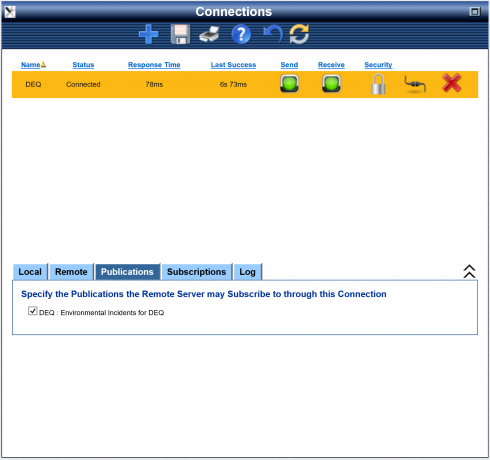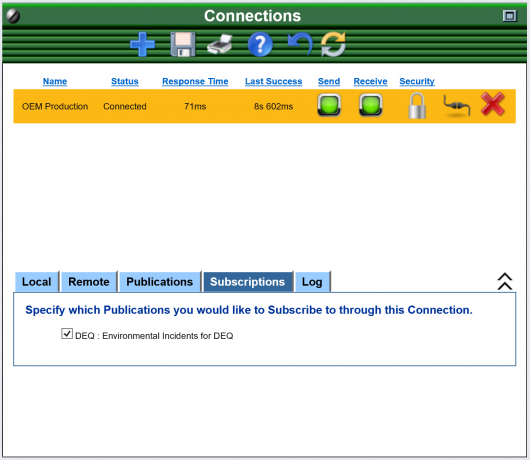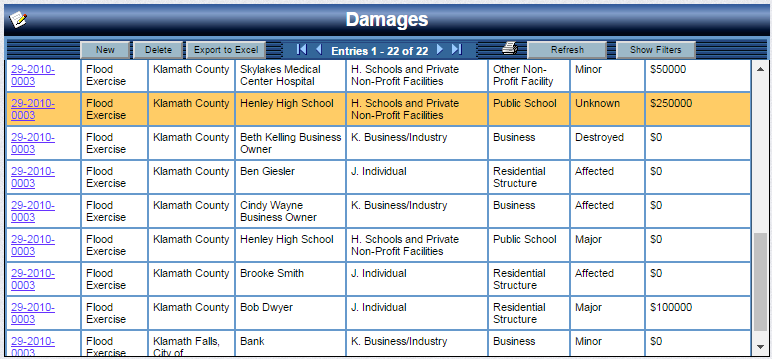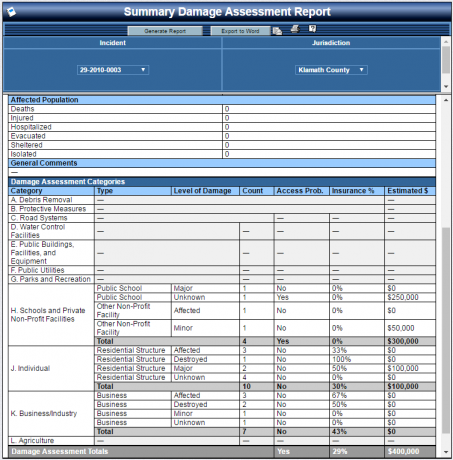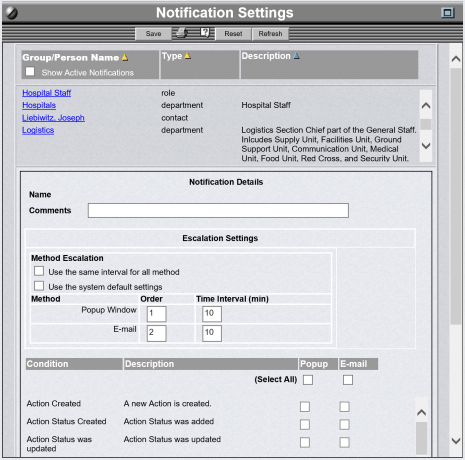OpsCenter is designed from the ground up to share information securely. This includes sharing within your own organization and sharing to external organizations. OpsCenter's real-time sharing provides information dissemination during emergencies and reduces the workload on your staff.
OpsCenter Connections Screen from Publishing System
Sharing Information within your Organization
OpsCenter is an Enterprise Application. That means it is designed to support lots of people (an enterprise) working together. To work together people must share information. Here are some examples of how OpsCenter shares information within an organization:
- Status Boards - Status Boards provide real-time information on a specific subject. When a user enters information into a Status Board, all the other users that have permission will immediately see it. The Status Board automatically updates and shows the new information. As an example, the Damages Status Board is shown above.
- Reports - Reports combine information on multiple subjects (Status Boards) in an organized format. Reports are excellent at sharing information with people that do not have access or cannot update the underlying information. The Damage Summary Report is shown above.
- Notifications - Notifications allow and organization to configure OpsCenter to automatically sharing information with the appropriate people based on the response activities taking pace.
Sharing Information with other Organizations
OpsCenter provides several means to share information with external organizations.
- REST (Representational State Transfer) - OpsCenter uses REST to move data between two systems that have agreed to share information. The specific data to share and when and how to hare it are configurable. Establishing the connection is straightforward. Above are two screen shots, one from the system that is sharing (publishing) the information and the other is from the system that is receiving (subscribing) to the information.
- Reciprocating roles - This approach is the easiest way to share information with external organization. Simply setup a role that give the external organization access to the information you want them to see. You decide if they have read-only access or if they can update information.
- Notifications - Notification includes the ability to notify people outside of your organization.
